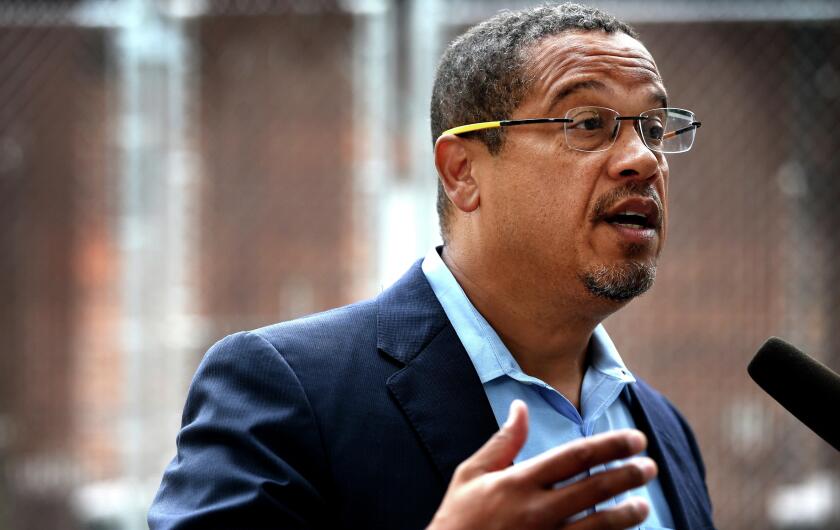ST. PAUL — Minnesota Gov. Tim Walz is calling for $300 million in local public safety aid as part of a $1.5 billion health and public safety budget proposal released Monday, Jan. 23.
In addition to the local public safety aid, Walz in his third installment of budget proposals called for expanding affordable health care by establishing a MinnesotaCare public option and more than a billion dollars in affordable housing proposals over the next four years. The Democratic-Farmer-Labor governor also pitched gun control measures including universal background checks and a ban on “high-capacity magazines.”
ADVERTISEMENT
At a Monday news conference in the St. Paul suburb of Roseville, Walz said he and Lt. Gov. Peggy Flanagan met with local public safety officials across Minnesota last year to get a sense of needs across the state. From those meetings, they concluded it would be best practice to put as many of the safety spending decisions as possible in the hands of local governments.
“We have a responsibility to those firefighters in Virginia as much as we do in Roseville and to the citizens of Virginia or Roseville that they get the best quality service. And they’re doing it but they’re doing it in conditions that need to be upgraded,” Walz said. “This proposal will make sure that communities have what they need.”
In all, the Monday budget proposal calls for more than $500 million in public safety spending over the next four years, including firefighter training and education, police use-of-force investigations and crime victim support.
Walz has been releasing his budget recommendations in pieces and is expected to provide the final overview this Tuesday. Last week he presented a $12 billion proposal aimed at education and family assistance and a $4 billion package focused on economic development.
The public option for MinnesotaCare in the health and safety plan released Monday would provide an option for people to buy into MinnesotaCare if they can not afford private coverage. The proposal would cost $17 million over the next two years, the governor’s office said.
Beyond the new public option for MinnesotaCare, the proposal also calls for insurers to provide preventative care services at no cost and investments in mental health services for children and adolescents.
Affordable housing proposals include $100 million to help preserve and rehabilitate existing housing, $100 million for homelessness prevention, and $128 million over the next two years for downpayment assistance and closing costs for first-time homeowners and rental assistance for low-income residents to ensure they pay no more than 30% of their income on rent. A $40 million investment would go toward building affordable housing in small communities in Greater Minnesota.
ADVERTISEMENT
The governor also aims to make Minnesota the fourth state in the U.S. to end veteran homelessness — something they hope to do by providing permanent funding to the Minnesota Department of Veterans Affairs housing efforts.
The gun control proposals included in the budget announcement include limits on magazine capacities, allowing “red-flag” protective orders to remove firearms from people who pose an immediate threat to themselves or others, and increasing the minimum purchase age for semi-automatic rifles to 21. House Speaker Melissa Hortman, DFL-Brooklyn Park, has said she hopes to see action this session on gun control, including on background checks and red flag laws. With a one-seat DFL majority in the Senate, the prospects for gun control legislation in that chamber are murkier than they are in the House, where DFLers have a six-seat majority.
The governor is required to make his recommendations to the Legislature in January of a budgeting year, and lawmakers and the governor must pass a budget for the next two years by June.
DFL lawmakers, who now have majorities in both the Senate and the House, will craft the state budget, and it’s likely the final budget will look different from Walz’s initial proposals. The state has a historic $17.6 billion surplus, but much of that money — about $12 billion — will only be available once and will not carry over into future surpluses. The exact numbers could also change after the Department of Revenue releases another budget forecast in February. Minnesota’s most recent two-year budget was more than $50 billion.













